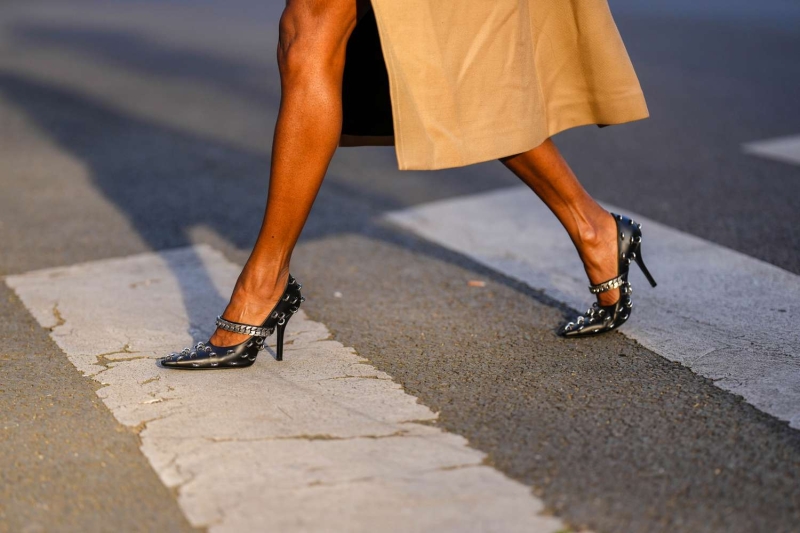Contents
A expert explains how the ancient ingredient supports skin health.
Beauty enthusiasts are raving about shea butter for skin and hair. Although the popular ingredient has only recently been showing up in the formulas of most lotions, shampoos, and other moisturizing beauty products, it’s been used in East and West Africa for centuries.
Shea butter is a fat derived from the shea kernel of the African shea tree. Pure shea butter is ivory in color and is unrefined and raw, meaning, it is free of chemicals and preservatives. The emollient is essentially a hydrating hero—but that’s not all. “Shea butter contains a high amount of fatty acids and vitamins,” says cosmetic chemist Shuting Hu, PhD, the founder of Acaderma. “It is a fantastic ingredient for the skin and hair.”
Meet the expert
- Ruth Jobarteh-Williams, M.D., FAAD is a board-certified dermatologist. Shuting Hu, PhD, is a skin biologist and founder of the skincare brand Acaderma.
Keep scrolling to learn all about the benefits of shea butter for skin and hair.
Skincare and Haircare Benefits
If your skin or hair is feeling or looking dull and parched, shea butter can help bring it back to life. "As an emollient, shea butter locks in moisture to your skin and prevents transepidermal water loss," says Dr. Hu. "Additionally, the oils in shea butter easily melt into the skin and work as an incredible moisturizer."
The biologist adds that it is also helpful to treat inflammation, promote cellular regeneration, soothe irritation and dryness, as well as protect against free radicals, among other benefits.
Shea butter's antioxidant and anti-inflammatory effects come from "the triterpenes, tocopherol, phenols, and sterols it contains," says dermatologist Ruth Jobarteh-Williams, M.D. "The best result is seen when shea butter is used in a formulation that also contains humectants. "
Who It's For
“People with dry skin would benefit the most from using shea butter, as it not only replenishes moisture to the skin but seals it in, keeping the skin hydrated for longer periods of time,” explains Dr. Hu. “Anyone who struggles with eczema, inflammation, or cracked skin can use shea butter to soothe irritation, which tends to flare up during the fall and winter.”
While shea butter is an amazing ingredient to use to combat dryness for skin and hair, it may be a bit heavy for those with fine, straight strands. However, people with thick, coily hair can benefit from using the ingredient to seal in moisture.
When it comes to skincare, nearly everyone can benefit from using shea butter, which is hydrating yet non-comedogenic (meaning it won't clog your pores). That said, Dr. Jobarteh-Williams warns that "those with acne-prone skin should proceed with caution."

Yellow vs. White Shea Butter
"The main difference between yellow and white shea butter is that white shea butter is processed and yellow is not," says Dr. Hu. "Yellow shea butter is essentially raw, so does not go through any filtration to remove impurities. White shea butter is processed to remove impurities and is much smoother in texture. You may also notice a strong odor from yellow shea butter whereas white shea butter is odorless."
However, even within the processed shea butter realm, there are variations. For example, unrefined shea butter will still have an off-white tint, whereas the heavily refined variety will be purely white.
"When it comes to skincare, I would recommend using unrefined or raw shea butter," Dr. Hu suggests. "The ingredient in this form has a higher vitamin content so your skin will benefit more from the raw or unrefined version. When shea butter is heavily refined, a lot of the healing properties of the ingredient are removed and will be lost in the filtration process."
How to Use
Whether or not it's mixed with something else, shea butter is a powerful moisturizer on its own. But when it comes to how to use it, that really just depends on your preference for texture.
"On its own, shea butter has a very thick, hard-to-use texture," says Dr. Hu. "I would recommend using a moisturizer or cream that has shea butter in it so that it is easier to spread on the skin."
However, if you're someone who has been using shea butter in its purest form since the beginning of time, there's no need to switch things up.
Frequently Asked Questions
- What's the best way to store shea butter?
Seeing as shea butter melts under heat, it's best to keep it out of hot rooms and direct sunlight. Keep it in an airtight container to prevent contamination.
Can you put shea butter on your face?
"Shea butter is generally considered non-comedogenic meaning non-pore clogging. However, those with acne prone skin should proceed with caution," says Dr. Jobarteh-Williams. "I personally prefer it for those with really dry skin and non-acne prone skin if it will be used on the face."
Is shea butter better than coconut oil for skin?
Shea butter and coconut oil are both hydrating ingredients with anti-inflammatory properties. However, shea butter seems to score slightly higher than coconut oil thanks to being non-comedogenic, which coconut oil is not.
Sources InStyle uses only high-quality sources, including peer-reviewed studies, to support the facts within our articles. Read our editorial process to learn more about how we fact-check and keep our content accurate, reliable, and trustworthy.
"What Is Shea Butter?" Karité Shea Butter.
